Covid hit. The world changed, but my love for riding didn’t. Despite the lockdowns, I tried to ride as much as possible. Not any easy feat considering Vietnam’s tight measures. I did more roadtrips in 2020 and 2021 than most people, but then again I also spent more time in self isolation. Give and take…
After two years without leaving the borders of Vietnam, it was time to go back to the Old Continent to visit family and friends. That meant no riding for more than a month…
How to scratch that itch? Simple: I called one of my best friends who happens to owns a motorcycle and the rest is history…
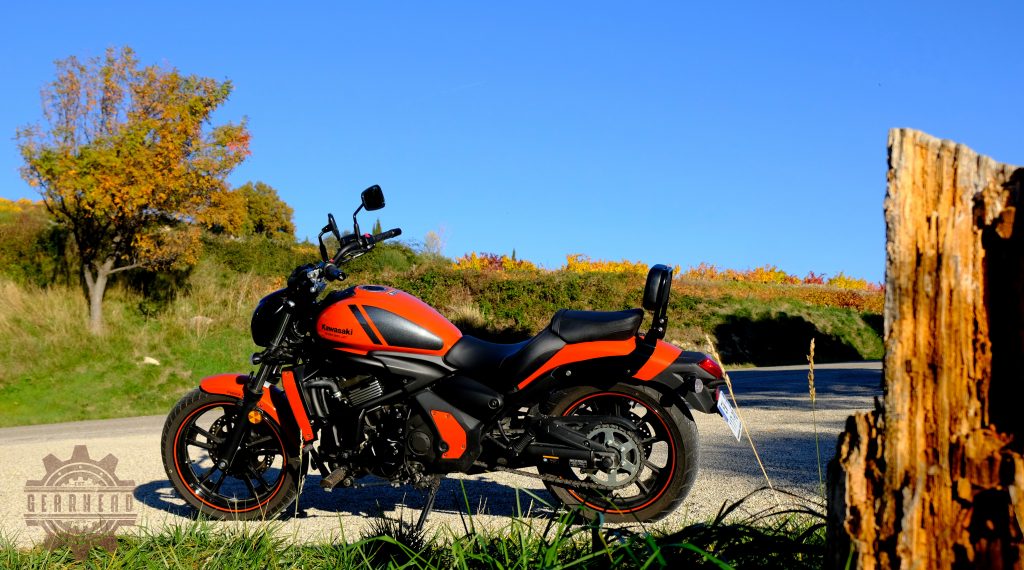
What is it?
This is the Kawasaki Vulcan S 650. Kawasaki describes the Vulcan as a “sport cruiser”, which is rather unusual. Cruisers are usually defined by their large-displacement V-twin engines, low seat height and forward foot controls. At first glance, the Vulcan seems to have a lot of common with a cruiser, except for its smallish engine; Kawasaki’s renowned 649cc parallel twin, also found in the Ninja and the Versys.
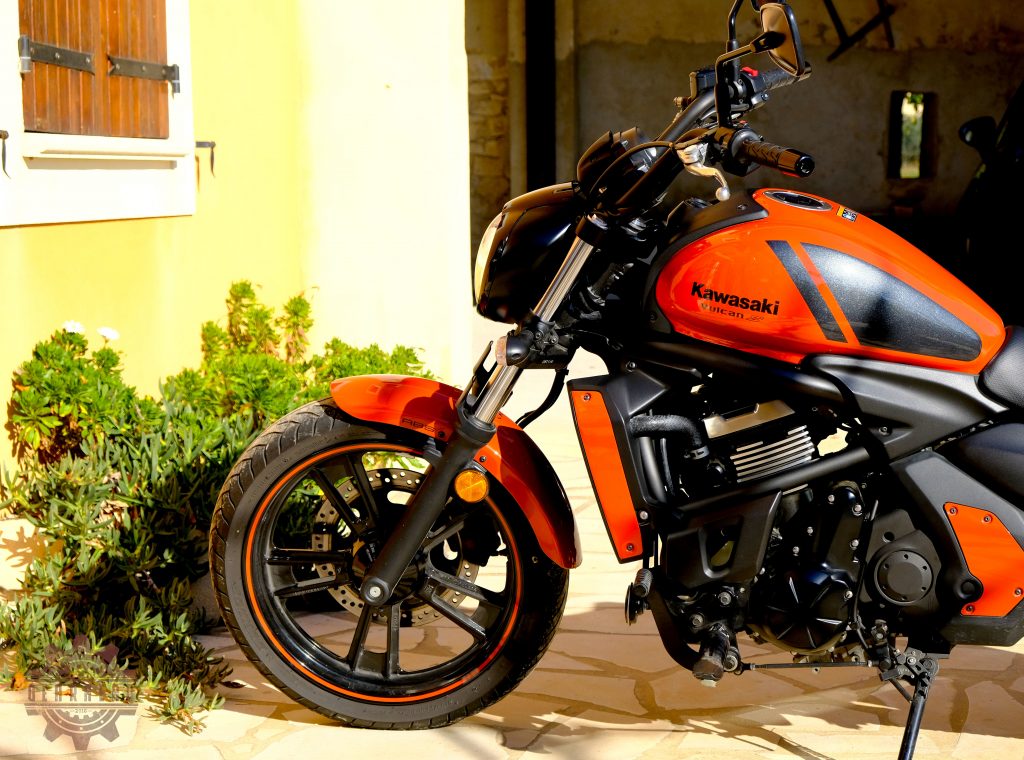
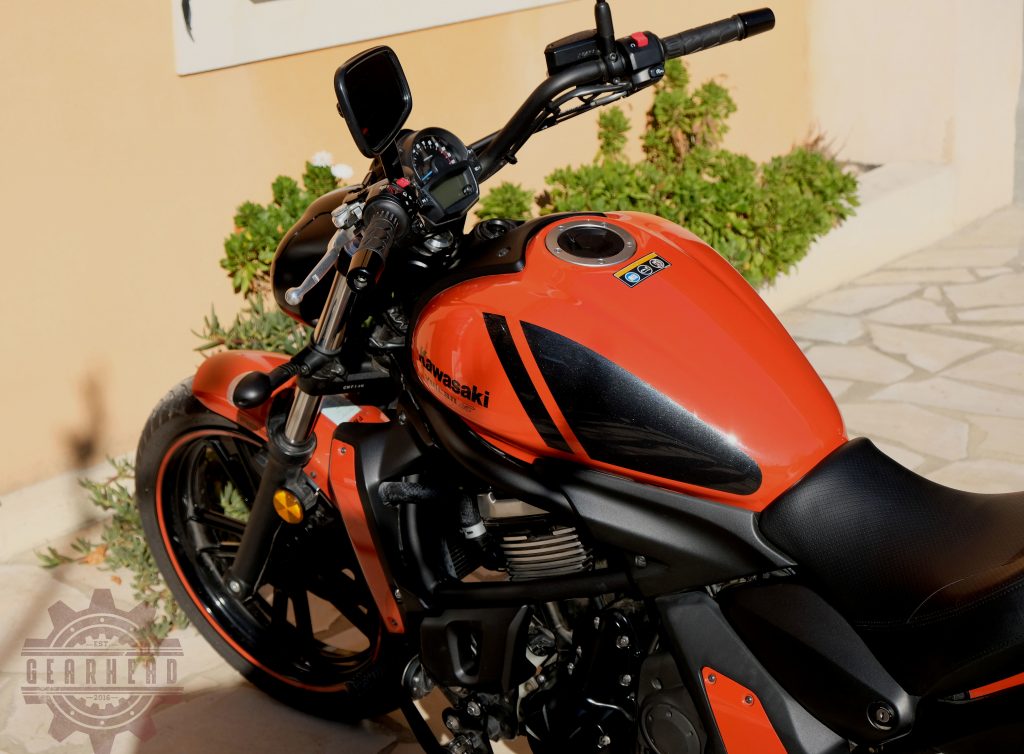
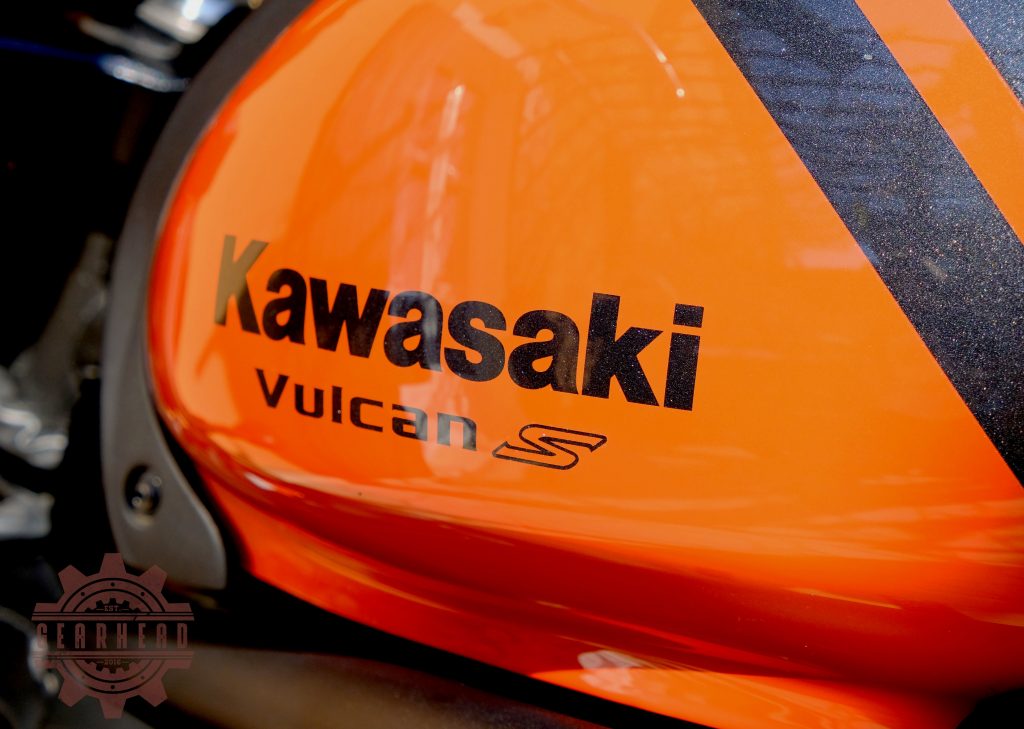
How does it look?
IMHO it’s a handsome bike. What struck me on this particular one is the color scheme which really pops: a combination of a deep orange with metallic charcoal. Kawasaki has coined this paintjob “Pearl Lava Orange”. The frame, engine and engine casings are painted in satin black. All this blackness is offset with more (glossy) black accents and brushed metal finishes. It just looks really cool.
A quick note on the mirrors, as they don’t get a lot of love on the Internet. Surprise! I really liked their unusual, squarish shape. They’re nicely finished, sturdy and mostly vibration-free. As for the other details, the engine block is adorned with cooling fins, reminiscent of the good ol’ days when engines were still air-cooled. On the Vulcan, they only serve a purely aesthetical purpose, as it has a water-cooled engine. But it’s a nice touch nonetheless.
I particularly love the front end of the bike. The spade-shaped headlight gives it a modern and sporty look. On top of the headlight sits a compact gauge cluster which sports an analog tachometer, while all the other information is shown on an LCD display. It’s rather small but displays everything you need to know. The rear end looks less stellar. The wide rear fender makes the tire look skinny. This Vulcan is fitted with the optional sissy bar.
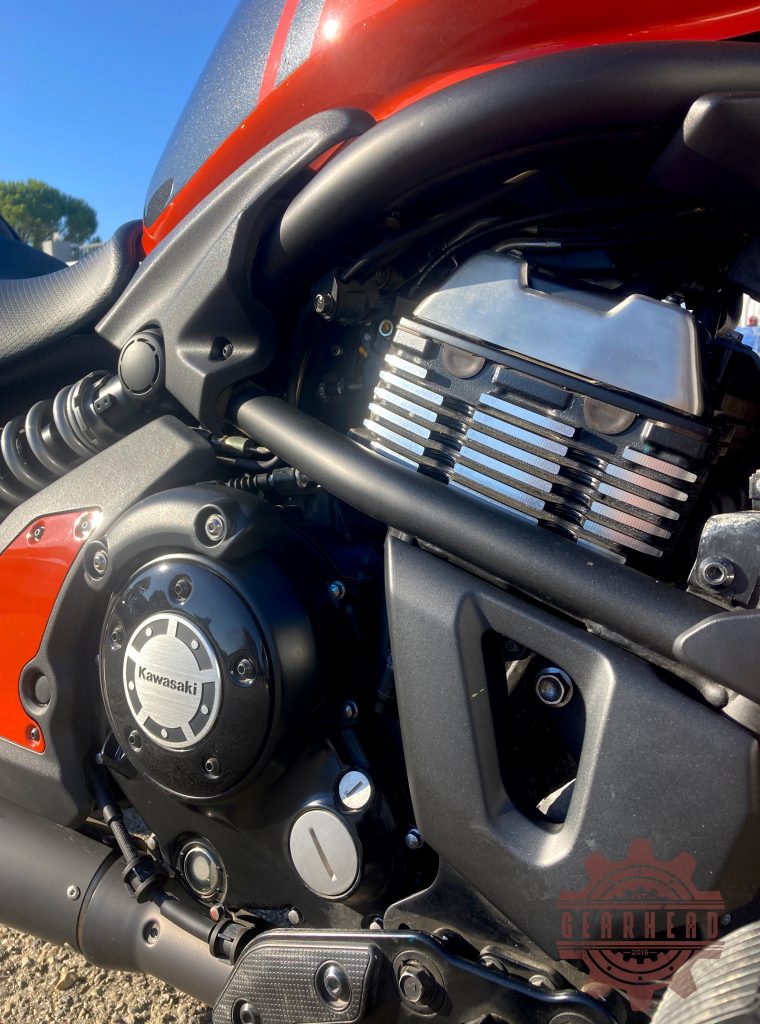
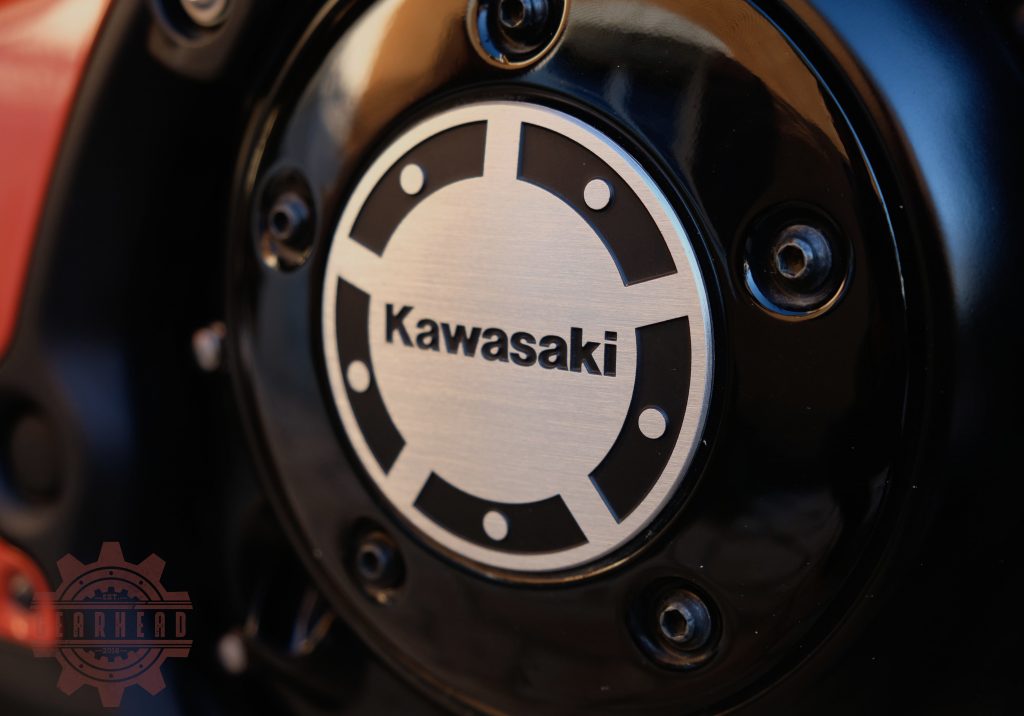
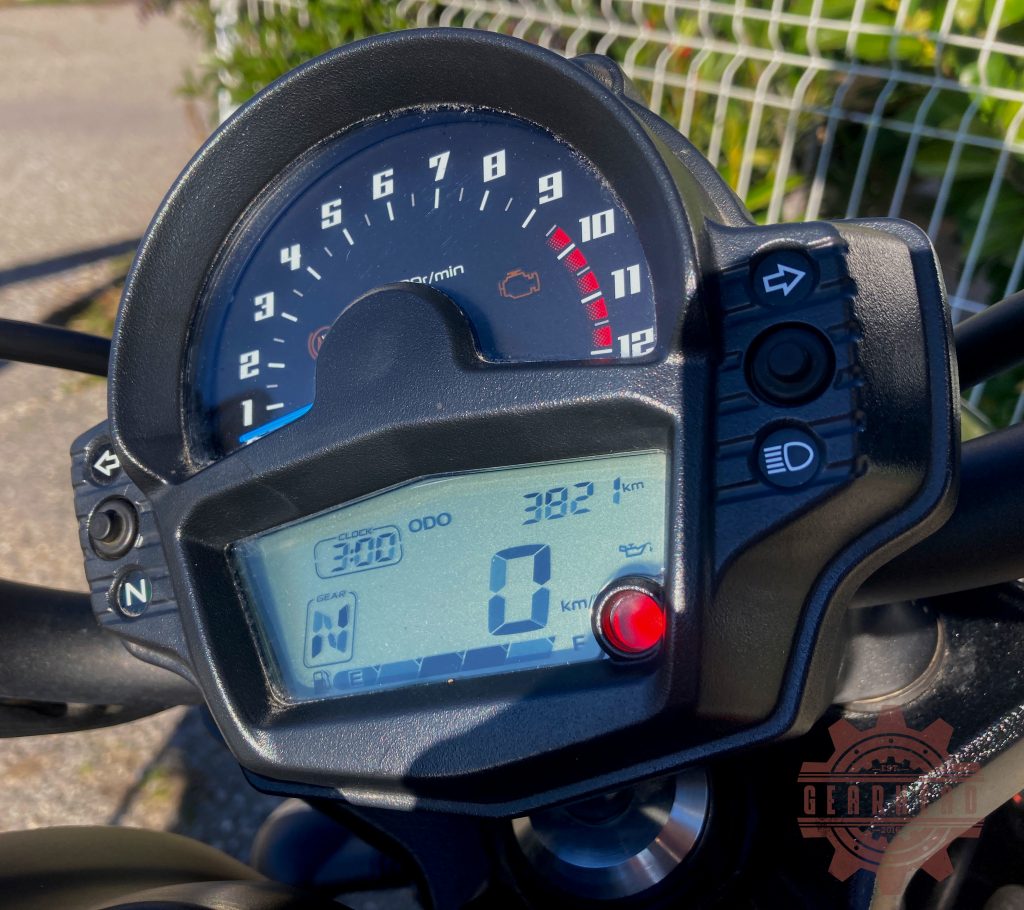
How are the ergonomics?
The seat height sits at a ridiculously low 705mm. It’s like sitting on my childhood tricycle. The seat is something wonderful, it wraps my bottoms like a Huggies diaper (dry, that is). There’s no sliding around in this thing. Since you can’t really move around, you can always adjust the pedals to suit your height (although you’ll need a shorter or extended shift rod).
It didn’t take me long to adjust to the “feet forward” riding position. The handlebars and all the controls fall are exactly where they are supposed to, so the riding position feels quite natural. Overall, I felt the ergonomics were excellent. I suffer from lower backpains and TOS. So, the riding position is very important to me. My other bikes are fitted with bar risers to alleviate shoulder and neck pains. I don’t think I would need them on them on the Vulcan. As a matter of fact, I did up to 2-hour rides without any significant complaints, besides a sore butt. Clearly, I am no contender for the iron butt challenge… For cross-country touring, I would definitely check out some other bikes.
How does it ride?
I am used to riding sport and adventure bikes. So, a cruiser… that must be very boring? Turns out I couldn’t have been more wrong…
Riding the Vulcan S is like riding a bicycle. It’s low, light and nimble. So, it handles with great ease. What was even more surprising was the amount of confidence it gave me from the get-go. Thanks to its low center of gravity, it’s also super easy to throw into corners. The only thing stopping you from going any faster will be the footpegs scraping on the tarmac.
Engine-wise, it feels very familiar. I have ridden both the Ninja, the Z and the Versys with the same engine. Here, it’s rated at 61 horsepower, which is 7hp less than the others. While these aren’t mindblowing numbers by any means, the Vulcan is fairly quick. The engine is tuned with low-end and mid-range torque in mind, which suits the character of the bike very well. The braking system is very similar to the Versys-X. Single rotors front and rear, with a dual-piston caliper in the front. For some reason, the brake feel on the Vulcan was miles ahead of whatever the Versys-X is trying to convey. The suspension is basic but gets the job done; the front is non-adjustable, while the back is preload adjustable.
This Vulcan S was fitted with the optional Arrow exhaust. The exhaust note is nice and throaty during acceleration, without being obnoxious. I was smiling from ear to ear each time I opened the throttle. It’s relatively silent at stable speeds and there’s the occasional pop on deceleration.
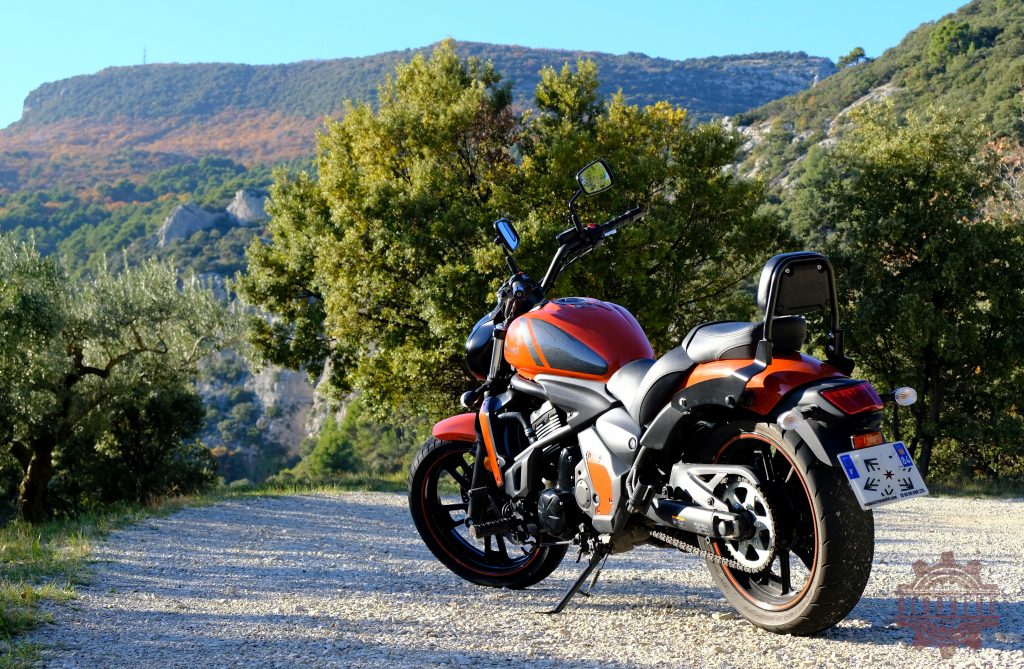
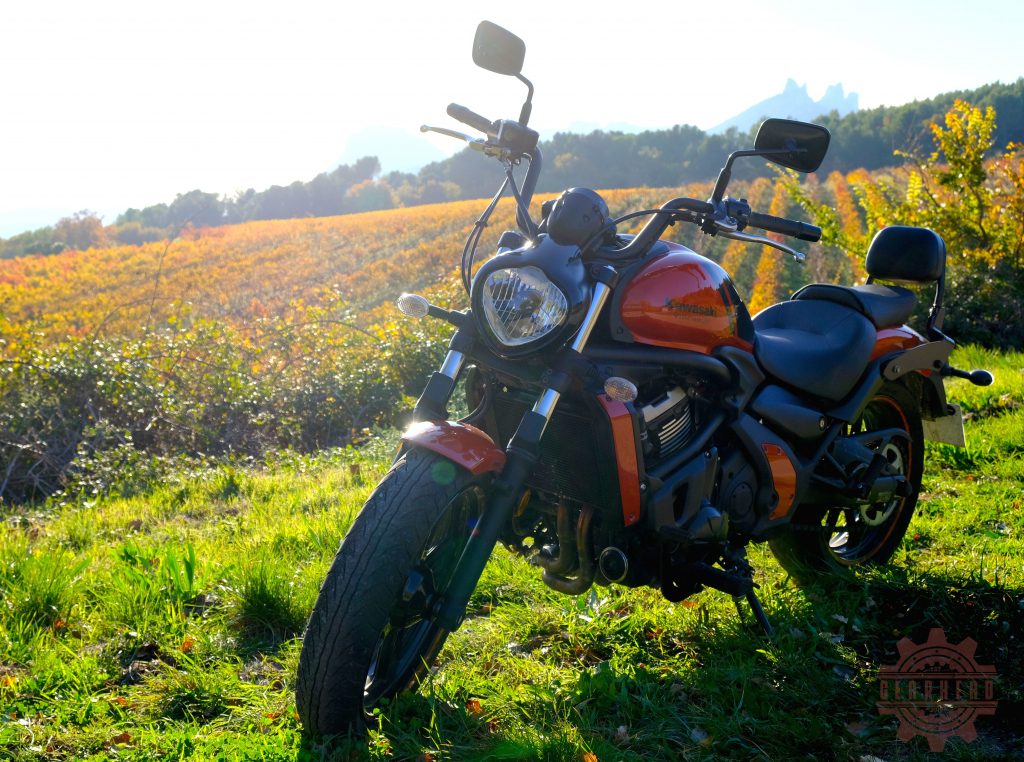
Conclusion
A week behind the bars of the Vulcan left me astonished. How could a cruiser be so much fun? How could I have underestimated it so much? It seems that Kawasaki was right by calling the Vulcan a sport cruiser. I was able to get to know the Vulcan on the winding roads in Provence, which is basically paradise for guys like me. I truly had a blast. Its crisp handling, punchy engine and good suspension make this a great bike. Besides the lack of any storage of any kind, I couldn’t really fault it.


